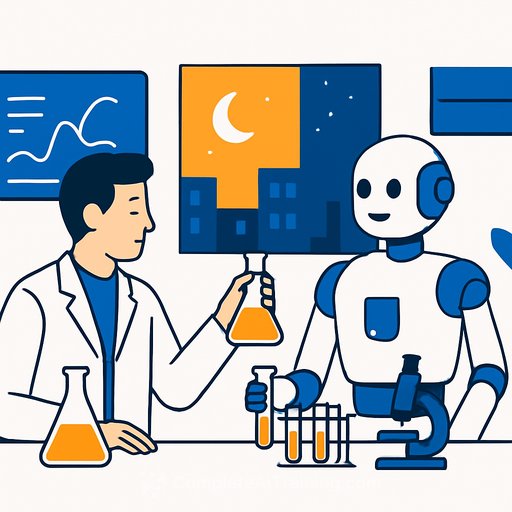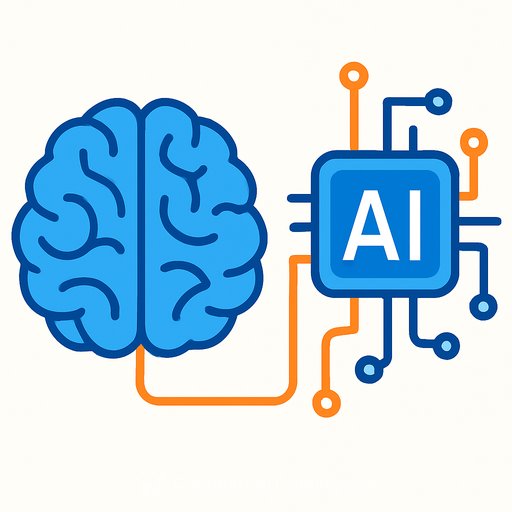Smart Labs, Real Work: How Scientists Can Use Automation Without Losing the Plot
Biotech research is getting tougher and busier. Climate-linked pathogens, drug-resistant microbes, and aging populations are stacking up questions faster than any team can pipette. The fix isn't more hands-it's better workflows. Robots and AI aren't rivals; they take the repetitive grind so people can push the thinking.
From Scripts to Smart Labs
Two decades ago, bioinformatics scripts cleaned up data after experiments ended. By the mid-2010s, those scripts connected to plate handlers so synthetic-biology teams could run design-build-test loops while they slept. Now, closed-loop systems with large language models can read fresh results, propose the next hypothesis in plain language, generate the code, and pass instructions to robots-then feed the outputs right back for the next cycle. Work that used to take weeks can finish in an afternoon.
Speed is only part of it. These loops test thousands of variants overnight, while precise dispensers and inline spectrometers cut error rates. Every dispense, movement, voltage change, and code tweak gets logged, creating an audit trail fit for clinical work. And if budgets are tight, cloud lab access lets smaller teams rent automation for a weekend without buying a campus of hardware.
The Lab Bottleneck: Why This Isn't Plug-and-Play
Most platforms are still built for software engineers, not bench scientists. Proprietary code and rigid menus snap when protocols shift. By the time a robot is reprogrammed, the protocol may already be outdated-especially in discovery-heavy work.
Vision systems can spot a single misshapen colony, and models can catch subtle anomalies. But they need clean training data and regular calibration, which is a lot to ask from lean teams. Regulations are tightening too: the FDA is pushing "predetermined change control plans" and machine-readable logs for every tweak, which is hard to meet without strong digital systems. See the FDA's guidance on PCCPs for ML-enabled software functions for context: FDA PCCP Guidance.
Access is the other pressure point. Well-funded labs adopt closed-loop automation, publish faster, and pull in more grants. Without shared resources, modular hardware, and training access, smaller labs risk falling behind.
Make Automation Speak "Scientist"
Interfaces should accept plain requests like "prepare a seven-step dilution series for a standard curve in a 96-well format" and output vendor-neutral instructions. Prototypes exist; they should become standard. Modularity matters too. Swappable tool heads let a robot jump from gene editing to single-cell work without rewriting everything.
Training has to change. If wet-lab work and data science remain siloed in grad programs, new scientists will inherit tools they can't troubleshoot. Hybrid fluency-protocols, scripting, QC, and change control-should be part of the core skill set.
A Practical Adoption Plan for Lab Leads
- Start narrow: pick one high-volume, rule-based workflow (e.g., plate prep, QC assays) and make it fully walk-away.
- Go vendor-neutral: prefer open standards and APIs; avoid hard lock-ins that block protocol edits.
- Invest in data plumbing: barcodes, structured metadata, versioned protocols, and automatic logs from day one.
- Write the change plan now: define what can change without review, what needs validation, and how it is recorded.
- Train hybrid operators: pair a wet-lab lead with a data person and cross-train both.
- Use cloud labs for bursts: rent capacity to validate the ROI before buying hardware.
What Robots Do Well-And What Stays Human
Robots bring precision, reproducibility, and stamina. They don't get tired on the third run or skip steps under deadline pressure. People frame the questions, interpret edge cases, and decide when to step in if a model drifts.
By night, code and hardware run. By morning, the outputs are logged and patterns are waiting. The work left is the work that matters: deciding what to test next and why.
Evidence and Further Reading
For a concrete example of self-driving experimentation accelerating discovery, see this Science Advances study: Self-driving laboratory for accelerated discovery of thin-film materials. If you're building compliant digital trails for AI-enabled workflows, review the FDA PCCP guidance linked above.
Upskill Your Team
If your lab is moving toward closed-loop work, targeted training shortens the learning curve. Explore AI and automation resources curated for professionals:
Your membership also unlocks:






